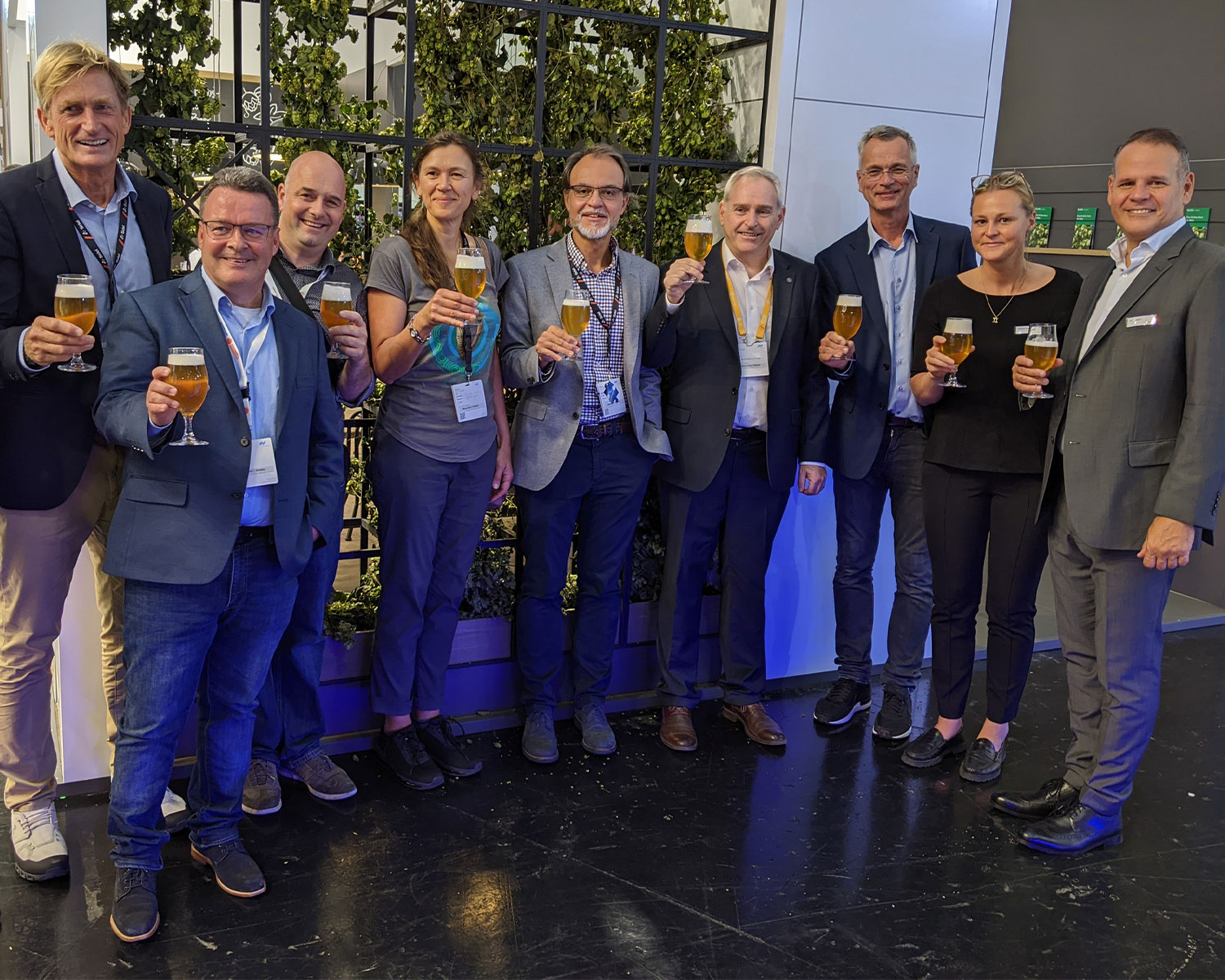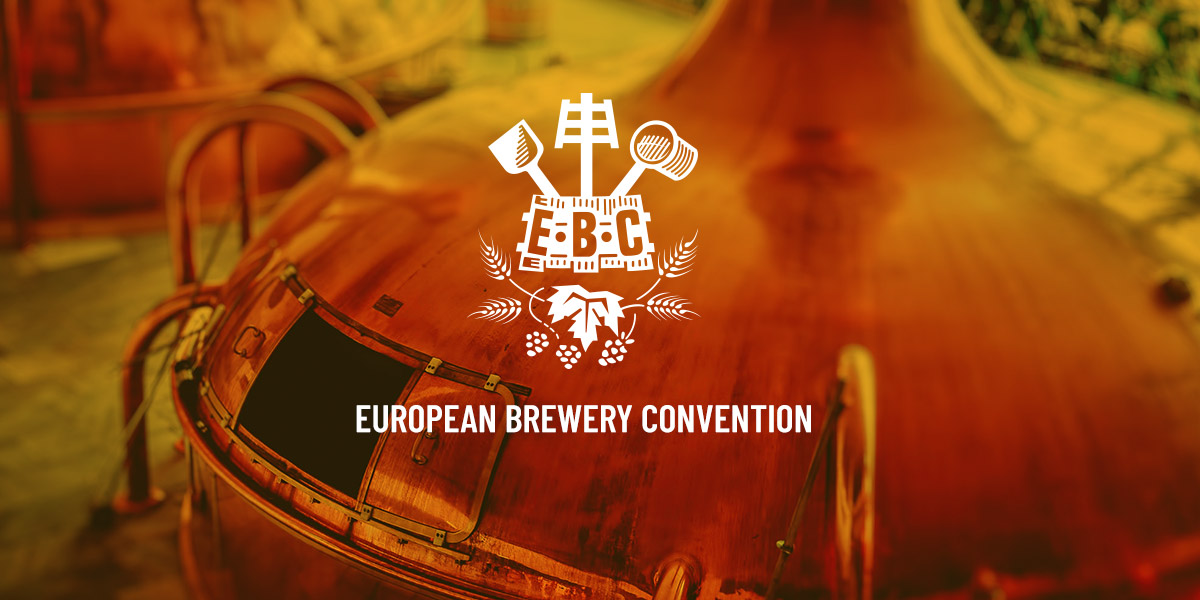Foreword By Goran Matic

Dear readers,
Please let me introduce myself; my name is Goran Matic, Supply Chain Excellence, R&D and Innovations Director, Molson Coors Beverage Company, Western Europe.
I’ve been in the brewing industry for nearly two decades, doing different operational and technical roles across Europe. I started my journey in Apatin brewery in Serbia when it was part of Interbrew. I had the great pleasure of learning from some incredible people from our industry. I moved with the family to the UK in 2014 as part of intercompany relocation. In my current role, my team and I are responsible for all major aspects of technical covering areas such: Operational Excellence, Sustainability, R&D and Innovations, Major Capital Projects, and Technical Compliance. I hold a master’s degree in biotechnology and bioengineering.
What are some of our industry’s key challenges?
The inflation and impacts on the cost of living that all of us are experiencing across Europe, energy supply uncertainty, shortages of materials, extreme weather, and extended capital lead times are some examples that our industry and many other industries face. To address some of our key challenges, I think we need to work together and collaborate more than ever before. This should be the way to find new, better solutions in how we brew our lovely products and tackle sustainability challenges. We need to be much more open-minded as a technical community by working closely with scientists and academics from different areas and getting them involved in helping us to solve some of our problems.
Supply chains globally have been under massive pressure, especially over the last couple of years; unfortunately, this won’t change soon. Looking at things from a bright side perspective, this could be a new opportunity to challenge the status quo and how we operate. There are many opportunities to use modern technologies across value chains, and this could be a perfect chance to define the “Brewery of the future” that will address some of the critical challenges, such as sustainability and agility that are extremely important in the context of the new environment that we operate in.
We are stronger together!
Cheers,
EBC at work
Feedbacks from the last EBC Executive Team
This meeting of the EBC Executive Team took place on 13 September in Munich, during Drinktec. As this was to be the first major trade exhibition since the pandemic (in fact, since Brau-Beviale 2019), it was firmly in our calendars to visit the trade fair and schedule our meeting concurrently.
The timing coincided with a critical time for the brewing sector in Europe. Countless breweries, both big and small, are struggling with a seemingly never-ending string of difficulties. First, the closures imposed by the pandemic, then recovery and – hope! And then to face various shortages, from bottles to cardboard, labels, parts, beer truck drivers and increased raw material costs. All packaged with a high rate of inflation and the loud clamouring for carbon dioxide. The mood was sometimes subdued, but the relief of being able to run into friends and long-time business associates was palpable.
The meeting was devoted to discussing the work-plan for 2023. Various initiatives are on the cards for EBC: A guideline document for best practices in dispense and dispense hygiene is on the to-do list, as is a briefing note on the production and technology of NABLAB production (no- and low-alcohol beer). Whether a document on practical steps to be undertaken en route to decarbonising our industry will be drafted, depends on budgetary and other considerations.
The meeting ended with a group photo taken at the stand of the hop trading company BayWa, accompanied by some lovely beers brewed in the pilot plant with some novel, or single, hop varieties.

Legend: Some of the members of the EBC Executive Team enjoying good discussions over a beer at the BayWa stand, Drinktec. From left to right: Jan Niewodniczanski (CEO Bitburger Brewing Group), former EBC President Stefan Lustig (S30upply Chain Director, EFES Group), Gert De Rouck (Brewing Pilot Plant Manager, Technologiecampus KU Leuven, Ghent), Sandra Stelma (Head of Science, Guinness – Diageo), Benet Fité (R&D & Innovation Director, Group Mahou San Miguel), John Brauer (EBC Executive Officer), Martin Zuber (Brewer Pilot Plant BayWa), Barbara Berger (Director Hops, BayWa AG) & David Alegre (International Key Account Manager Hops, BayWa AG).
Feedbacks from the last EBC Analysis Group
The EBC Analysis Group met on the 12th of September online to discuss projects (finalisation, ongoing, planned). A new method on bitter compound in wort should be published very soon (see later in the newsletter) whilst the Sub-Committee Hops is working on the determination of xanthohumol in beer as well as the diastatic power of hops. The International Method on determination of gluten in beer is waiting for approval of the ASBC before publication. The collaborative trial on colour determination by LAB is pending as the collection of samples is talking more time (participants to the collaborative trial will soon be contacted). The Sub-Committee Beer & Wort is now working on four additional projects, two of which have been ongoing for some months (Heavy Metals in Beer by IOS-MS and SO2 by DTNB and other methods), two of which are new (measurement of alcohol in non-alcoholic beverages and calculation of nutritional values in beer). A pre-trial on heavy metal detection in beer is in the pipeline whilst the trial on SO2 is planned for the next months (two out of the three methods to be tested are already drafted, and the sample is currently being sourced). Concerning the two new projects, detailed calls for information are available later in this newsletter. The Sub-Committee Microbiology reported about its activities: new members have joined the group, sharing their expertise, and work has started again on the detection of beer spoilers in beer by PCR. A pre-trial will be organised in 2023. Discussions are also taking place on whether the Sub-Committee should look at beer spoilers in other drinks produced in the brewery and how to detect them. The Sub-Committee Sensory is currently busy reviewing the EBC Methods on the matter (this will be done jointly with the ASBC to ensure consistency amongst the International Methods) and on elaborating a method on beer aging and on drinkability. The Sub-Committee Barley & Malt reported the Guideline Method on the gushing potential of malt is about to be finalised and published. The same is valid for a Guideline Method on malt wort turbidity which should soon be published. The results of a collaborative trial on a revised method on measuring boiled wort colour are undergoing statistical analysis and this should lead to a new method to be published before the end of the year. Finally, the collaborative trial on starch gelatinisation temperature will soon start (as samples are being collected before being shipped to participants).The EBC Analysis Group will meet once more before the end of the year to monitor progress and plan for the projects to be performed in 2023.
Call for Inputs
Call for Information and participants – Alcohol measurement in NABs
At its last expert meeting in Madrid, the Sub-Committee Wort & Beer decided to work on the different alternatives in the market / available methods for ethanol detection in non-alcoholic beverages (0.0 % ABV beer, and other mixed beverages, RTD)- be it in large breweries or in smaller ones (i.e. craft).
For this reason, we are now gathering information to get an update on existing methods and their suitability on our standard matrixes. Here is a list of questions on which we would like to receive feedbacks (please feel free to contact us on info@brewersofeurope.eu)
- Do you analyse NABs? If yes, which method/technology do you use? (GC-FID, enzymatic method, other?). We would really appreciate if you could share as much detail as possible (type of equipment and supplier, SOP/protocols, related publications, posters)
- What matrixes do you normally analyse: 0.0 % ABV Beer? 0.0 % Beer + soft drinks (0.0 beer mixers)? Any other matrix you would consider of interest for this project?
- What is the range of ABV for these matrixes? (different methods/accuracy is needed when NABs are lower than 0.05 % ABV against under 0.5 % ABV)
- What are the methods you know that do not work and why?
The next steps of the project are:
- Compiling all the information shared following this call for information;
- Collecting and comparing as many different methods from participants, assessing their pros and cons;
- Defining possible steps, such as: calling for trials and participants (depending on the methods). Creating a new EBC draft methods, if needed.
- Updating available EBC methods with the learnings of this study, if applicable.
- Selecting the best statistical way of presenting all the information that will be received, if different methods have to be compared.
Thank you for your collaboration!
The Sub-Committee Beer & Wort Chairs & Experts
Call for information – Nutritional labelling/calculation of energy value of beer
The Sub-Committee Beer & Wort will also be working on “the nutritional labeling of beer” and “the calculation of energy value of beer” according to Regulation (EU) No 1169/2011. Therefore, we are now gathering information to get an update on existing methods and their suitability for our standard matrixes. Here is a list of questions on which we would like to receive feedback (please feel free to contact us at info@brewersofeurope.eu)
- Do you analyze sugars and carbohydrates in beer?
- If yes, which method/do you use? (HPLC-RI, HPLC-ELCD, spectrophotometry)?
- If yes, what chromatographic column do you use?
- If yes, what type of carbohydrate degradation (during the determination of total carbohydrates) do you use (enzymatic method, degradation with sulphuric acid, other)? We would appreciate if you could share as much detail as possible (type of equipment and supplier, SOP/protocols, related publications, posters) as well as validation parameters of this method (minimally LOQ, recovery, and uncertainty)
- What matrices do you normally analyze: non-alcoholic beer, alcoholic beers, ciders, radlers, soft drinks, and others? Any other matrix you would consider of interest for this project?
The next steps of the project are:
- Compiling all the information shared following this call for information;
- Decision on what method to choose for the determination of sugars and total carbohydrates (only HPLC-RI or also HPLC-ELCD)
- Collaborative PRE-trial with maltodextrin solution with a defined concentration of carbohydrates
- Collaborative trial with real beer samples
- Updating available EBC methods 9.26 and 9.27.
- Updating available EBC method 9.45
Thank you for your collaboration!
The Sub-Committee Beer & Wort Chairs & Experts
Publications & Events
Method on bitterness in Wort
The new method EBC 8.20 “iso-alpha-acids and alpha-acids in wort by HPLC” on bitter compounds in wort by HPLC is a Guideline Method helping to determine the level of α-acids and iso-α-acids in wort. It is based on method 9.47 and an off-spring to International Method 9.50 “Bitter compounds in dry-hopped beer by HPLC” which was published in 2020. The method requires a High-Performance Liquid Chromatographic analysis. The EBC would like to thank M. Martin Biendl, chair of the EBC Sub-Committee Hops, as well as the experts involved in the development of this method. It is available on BrewUp, either via the yearly subscription (109€ a year, excl. VAT) or as a stand-alone purchase (29€ excl. VAT). It can be accessed directly here.
38th EBC Congress – Look back at the winners of the best posters and best presentations
As is customary, the EBC “inner circle” composed of the EBC Executive Team divided up their time during the EBC congress in Madrid (31 May to 2 June) to make sure that posters and papers worthy of praise in terms of presentation and technical-scientific advancement were being considered for the best paper & best poster award. As the interval this time had been three years since the last congress (and not two) the selection of the technical and scientific programme had been quite difficult and – given the wealth of choices – this was being mirrored by the difficulties in trying to single out the best paper & best poster. In the end, a compromise solution was proposed; namely, that not one but two posters and two papers would be nominated as the winners. The prize is a free registration to the next EBC congress for the presenting author (both poster and paper).
We are delighted in being able to share with you a reprint that was included in the latest edition àf the scientific journal BrewingScience, that came out at the end of August.
EBC Symposium 2023
The EBC Symposium 2020, upon the kind invitation of Assobirra (the Italian brewing trade association) was postponed until 2021, then cancelled as the situation regarding ease of travelling did not improve. As 2022 saw the organising activities peak around the EBC congress, the symposium dates were shifted to 2023. We are currently looking for the venue to host the EBC Symposium and are hoping to bring you news on this development in the next edition of our EBC Newsletter; however, it is safe to say that the EBC Symposium and Brewing Science Group Technical Meeting will not be taking place before the end of summer 2023, also on account of the 15th Trends in Brewing early April in Ghent, as well as our own Brewers Forum (www.brewersforum.eu) to be held 21 – 23 May 2023 in Prague.


